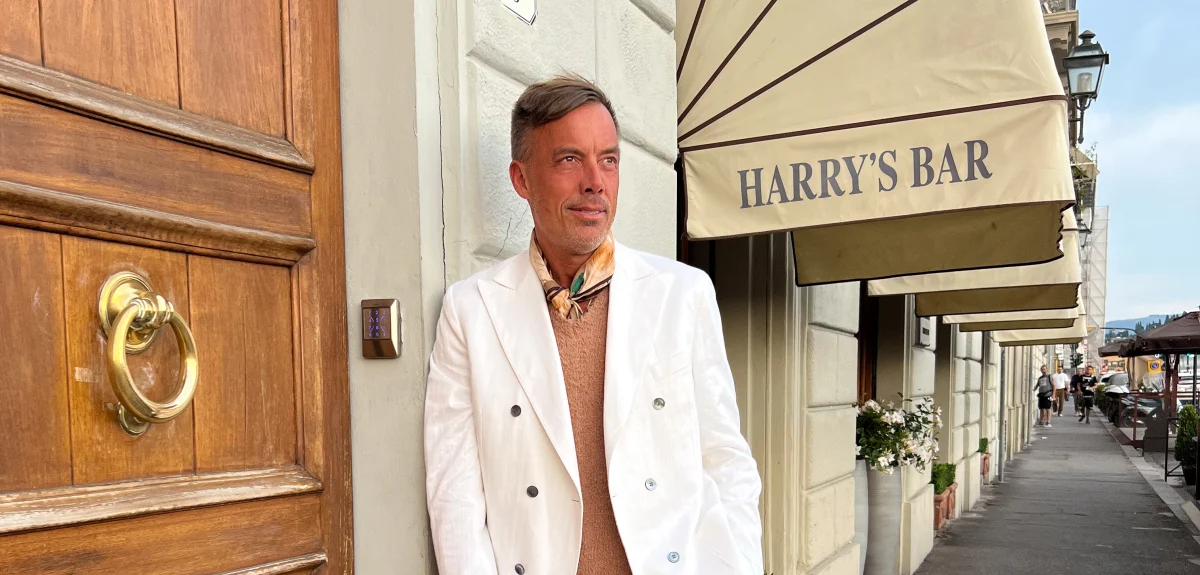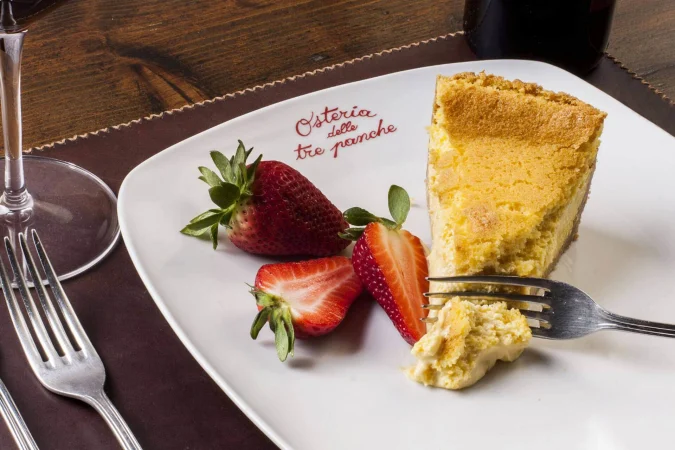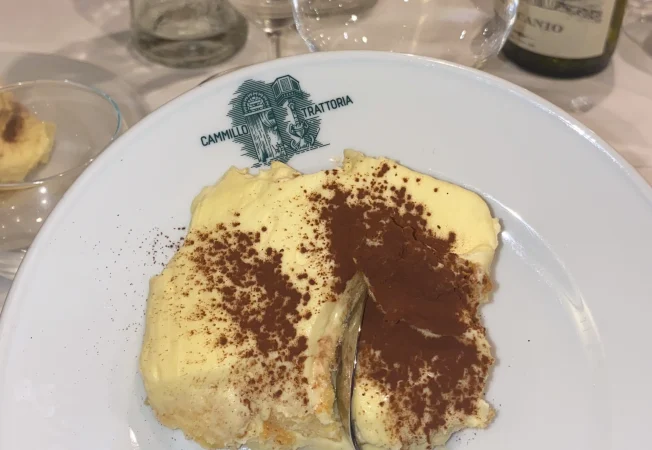
Fashion expert Daniel Lindström’s Guide to Florence
Where to stay, eat, shop – and jog.
The place to stay
Hotel NH Firenze

Before I begin, I would be remiss if I didn’t state that there are more charming (Belmond Villa San Michele), luxurious (the Westin Excelsior), and authentic hotels than NH Firenze. Nonetheless, there’s an enjoyable rooftop pool and in the summertime, when the heat can be a bit too much (often a tad over 30 degrees in June, July, and August), that means everything. No matter how wonderful it may be to roam around in this city, you’ll still be yearning for a pool, I promise.
The hotel is located in the Porta al Prato area near Parco delle Cascine, the largest greenspace in Florence, with both tennis courts and outdoor gyms, and the rooftop terrace looking down on the tiled roofs and Arno River is breathtaking even in the evening. Affordable!
The coffee shop to visit
Ditta Artigianale

We’re in the birthplace of espresso – the process was discovered in 1884 in Torino – and Florence has a storied café tradition with venerable establishments such as Gilli, Paszkowski, Rivoire, and Giubbe Rosse.
A more modern coffee shop, located on a small side street a short walk from the Ponte Vecchio bridge, is Ditta Artigianale, where you can buy a cup from the take-out window or sit inside the establishment and enjoy a more relaxed breakfast. Ditta Artigianale was founded in 2013 by Francesco Sanapo, a world-famous barista who wanted to open his own roastery featuring organically made coffee.
The coffee is naturally delicious, as are the bakery items on the menu. I usually stop by Ditta Artigianale after a run and enjoy a croissant made with Molino Dallagiovanna flour and French Corman butter and filled with cream and jam. Yummy!

The rooftop restaurant with a view
Osteria delle Tre Panche

This is such a well-kept secret in Florence that I’m almost afraid to share it. But, why not? The restaurant, which opened on the rooftop terrace of the charming, three-star Hotel Hermitage in 2017, is run by well-known chefs Andrea and Viera Bista.
The menu consists of various types of fresh pasta with a generous serving of truffles, for example tortelli di pecorino di fossa al tartufo (homemade ravioli with pecorino cream and fresh truffles). Does that sound good? If so, you should try their cheesecake made from a secret recipe from 1986. When Osteria delle Tre Panche made a guest appearance at the Chefs Club in New York, the meal cost $180 and was described as “more affordable than a vacation in Italy”.
However, what’s truly unique about this restaurant is the location, just a stone’s throw from the Ponte Vecchio bridge with a view of the historic downtown area. Dinner here last summer was an unforgettable experience for me.

The timeless classic
Trattoria Cammillo

While there are an abundance of typical trattorias in Florence, Cammillo in Oltrarno (the other, “oltro”, side of Arno) is truly something special. Whenever we attend the fashion show, we need to reserve a table here several weeks in advance.
Cammillo is operated by the third generation of the family that opened the restaurant in 1945. While when it comes to the decor, it’s like time has stood still – white walls covered with paintings, decorations, and framed newspaper clippings – the restaurant never feels dated, but rather eternally fresh. There is an open kitchen where smartly dressed waiters in white aprons emerge with their hands full of plates and trays. It’s hectic and noisy, but the service is quick and efficient and the staff have the characteristic self-confidence that’s expected when you work in such a historic establishment.
The menu consists of various homemade Tuscan specialties, depending on the time of year, for example ribollita (bread porridge), steak, mushrooms, truffles, wild game, cheeses, fish, and fresh vegetables. My favorite is spaghetti alla carrettiera with fresh cherry tomatoes and spring onions.
A clothing goldmine
Desii Vintage

Despite the fact that Florence is a rather small town, if you’re into either new or retro fashion, you’ll find plenty of shops. All the popular design houses are of course represented with their flagship stores, but it’s the small vintage shops that are the real gems.
One example is Desii Vintage on Via dei Conti, a Florentine institution that opened back in 1947! If you have the time to spend a few hours in the store, you’ll find a goldmine of treasures – American workwear and army uniforms from the ‘50s, streetwear from the ‘90s, and really nice accessories and purses from popular designers like Celine, Prada, Hermès, and Gucci.
As the merchandise is carefully curated, you can even assemble an outfit consisting of the latest in fashion. I put together, for example, a look featuring a pair of durable, straight-legged Dockers K1 chinos, a green oversized bomber jacket, and black penny loafers – just like the style you now see on the catwalk. (As an added bonus, the cozy Vintage Café, with outdoor seating on the small piazza, is right next door to Desii.)

Ascending the Piazzale Michelangelo

My job takes me to Florence twice a year: in January and in June when the men’s fashion trade show, Pitti Uomo, convenes at the Fortezzo da Basso. In spite of many late dinners, I try to get up and go jogging with my friends at 7 each morning. We meet up on the Ponte Vecchio bridge and jog southward down a steep, narrow alley toward the Piazzale Michelangelo, a plaza dating back to 1860 with a 360-degree viewpoint and numerous Michelangelo statue replicas.
The nice thing about jogging in Florence, aside from the lovely buildings, plazas, lush gardens, and historic bridges over the Arno River, is that you quickly leave the crowded, bustling downtown area and arrive at what almost feels like a Tuscan village, with green hills and picturesque stone farmhouses. It’s like getting a free sightseeing tour while you exercise. You can find good advice on nice jogging routes at greatruns.com.
A legendary bar
Harry’s Bar

They say that the original stools you see around the bar are the same ones in which Paul Newman, Elizabeth Taylor, and Margot Hemingway once sat while sipping their cocktails. Harry’s Bar, located right by the Arno River, is an institution and one of Italy’s most iconic watering holes (not to be confused with the Harry’s Bar in Venice – the Florence version is about 20 years younger, opening in 1953).
The customers drink Bellinis, Negronis, and martinis here, and the latter are served in snifter-like glasses – frosty and extremely dry. Harry’s has an atmosphere of old-fashioned elegance, with dark wood paneling, red tablecloths, vintage Murano lamps, and white-jacketed waiters – you really get the impression that very little has changed here over the past six decades. I normally order one of the Tuscan classics such as baked tagliolini with prosciutto or risotto primavera.
Text by Daniel Lindström